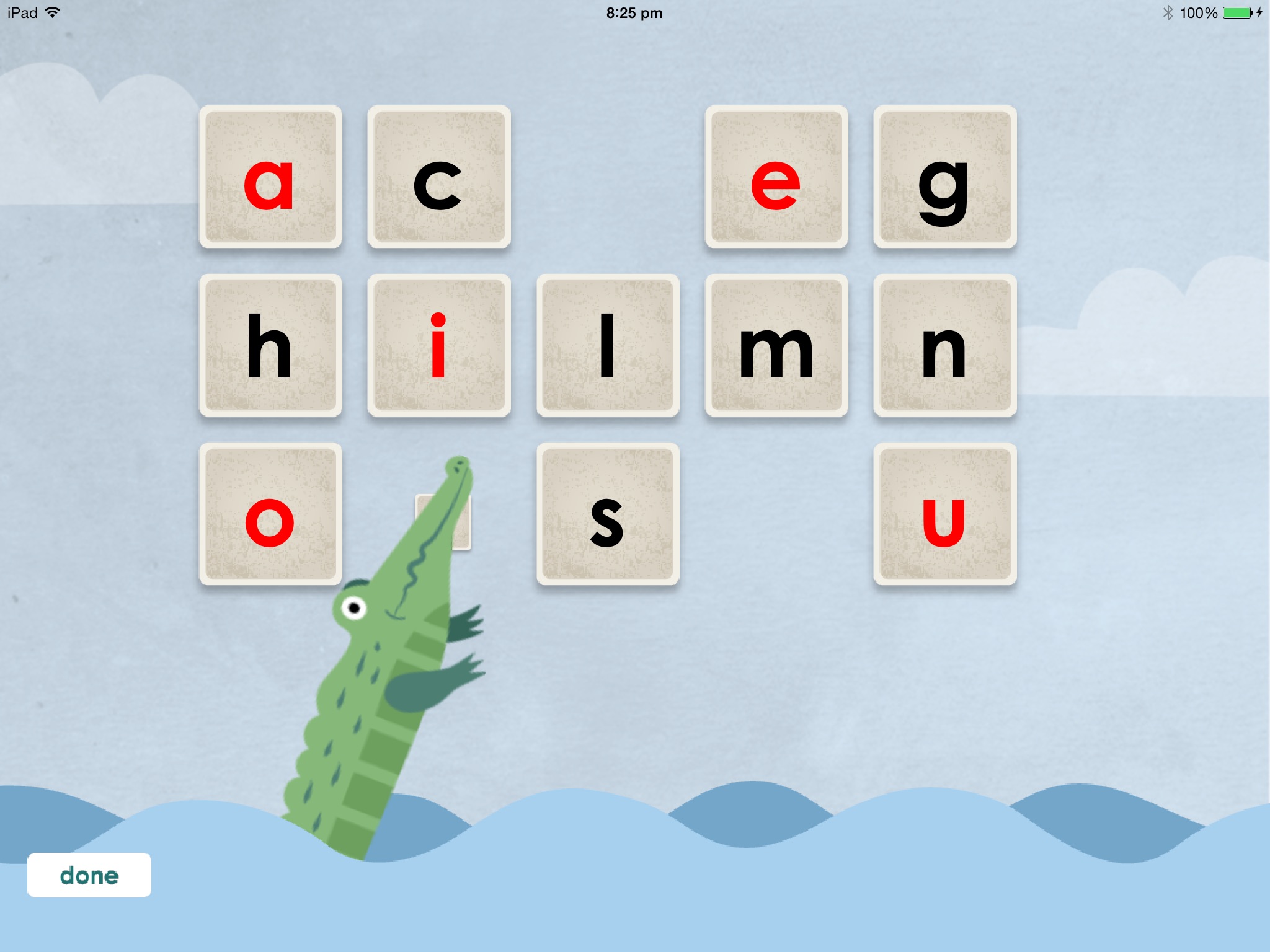
Intro To Canadian Phonics app for iPhone and iPad
Developer: DSP Learning Pty Ltd
First release : 06 Nov 2020
App size: 20.33 Mb
This app introduces 15 letter/sound relationships. Short vowel sounds /a/, /e/, /i/, /o/, /u/ and 10 consonant sounds for letters c, d, g, h, l, m, n, r, s, t. More sounds are introduced in our other apps.
Exercises in this app
Warm Up - This is a simple matching game with a difference: animal sounds, not pictures. This is to train your child in the first reading and spelling skill – listening. Two friendly ‘long-tongue’ lizards help by removing matched sounds.
Sound Match - OK! Your child is now ready to start listening to and matching some of the actual sounds of the English language. Being able to differentiate between sounds and match identical ones is fundamental to the reading and spelling process.
Now your child needs to learn the alphabetic principle, which is hearing a sound and knowing which letter make it, and the reverse, see a letter and knowing what sound it makes. The later is called decoding and will provide your child with the skills required for working out new words.
Sound-to-Letter - Once your child can identify individual sounds, they need to learn how these sounds are written down. A crocodile and bird provide a few surprises here.
Letter-to-Sound - Now we’re reversing the order – your child needs to know what sounds the written letters make. They can also learn capital letters by a simple touch.
Making Words – Words are made up of one sound after another. This illustrated, guided exercise will help your child put together words from the sounds/letters they have learnt in earlier exercises.
Word Test – See how many words your child can read using the Canadian Phonics method.
Who can use this app:
-Parents who want to teach their children to read.
-school age children who are struggling to learn to read at school. Check that they know their sounds, particularly the vowel sounds (not the letter names).
-Parents who want a better understanding of phonics. If your child is not a “natural reader” then improving your own understanding of phonics can greatly improve your chance of helping them.
-Dyslexic children and adults who struggle with reading. Phonics has been shown to be particularly effective for teaching dyslexics.
-ESL (English as a Second Language) students. The sounds of English differ from other languages and in order for ESL students to make themselves understood, they first need to become aware of the sounds they’ve never spoken in their mother tongue, and to practice making these sounds themselves.
- Speech Pathologists
DSP Learning is committed to helping children and adults learn to read. If you have feedback or suggestions for our apps, we’d love to hear from you. Please visit us at www.canadianphonics.com
or contact us at [email protected]



